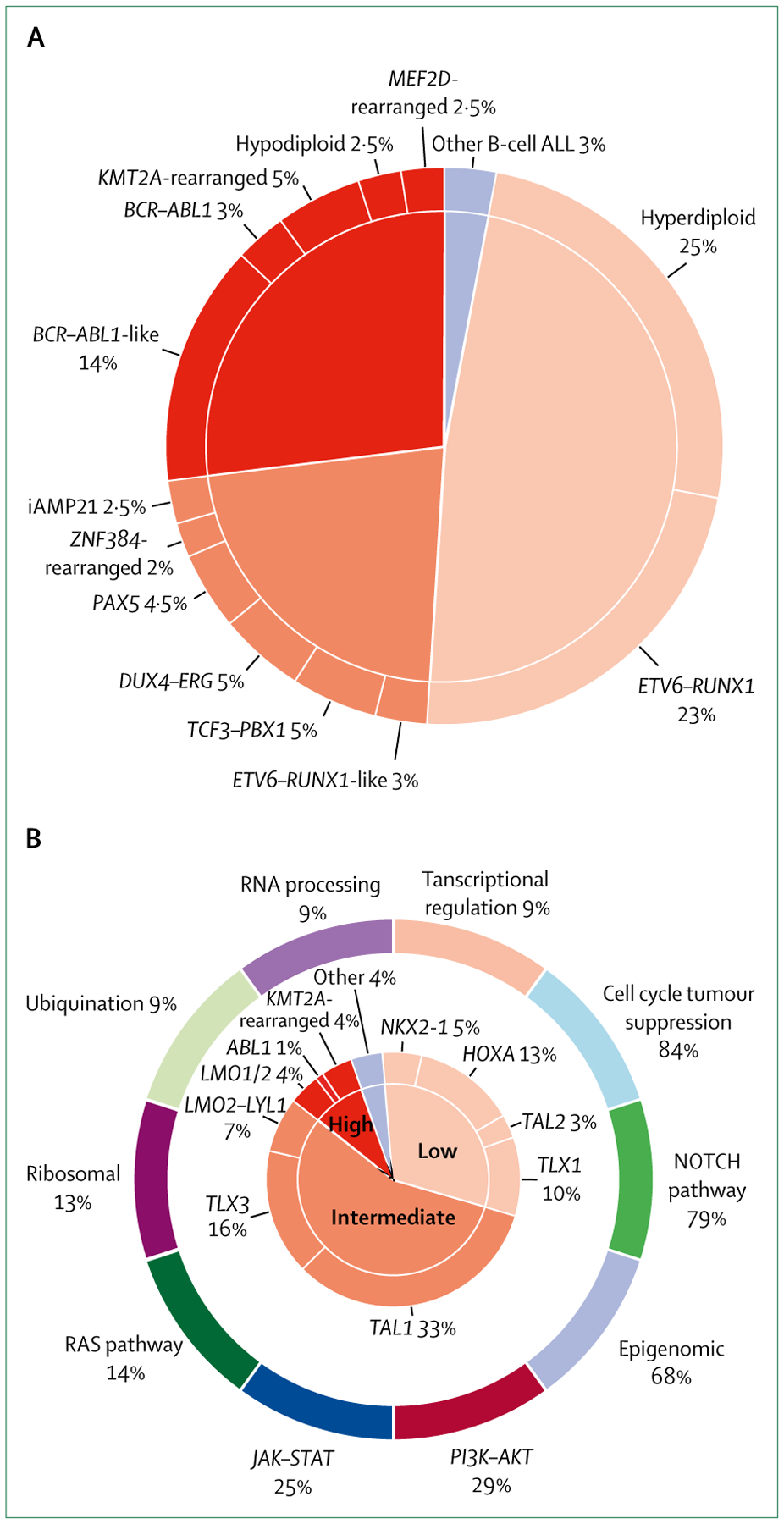Figure: Estimated frequencies of specific genetic subtypes of childhood ALL.

Pie charts represent patients with B-cell ALL treated in the St Jude Total Therapy study XV33 with modifications to account for discoveries of novel genetic abnormalities (A), and patients with T-cell ALL who were studied as part of the Therapeutically Applicable Research to Generate Effective Treatments initiative and treated in Children’s Oncology Group studies (B).34 T-cell ALL cases were divided according to dysregulation of targetable functional pathways (outer ring). Subtypes are grouped into low-risk, intermediate-risk, and high-risk categories on the basis of 5-year survival rates: over 90%, 70–90%, and less than 70% in B-cell ALL (overall survival) and T-cell ALL (event-free survival). The outcome (event-free survival) for patients treated in the AALL0434 trial,35 used for the T-cell ALL risk grouping in this figure, is superior to that in most other published studies. ALL=acute lymphoblastic leukaemia.
